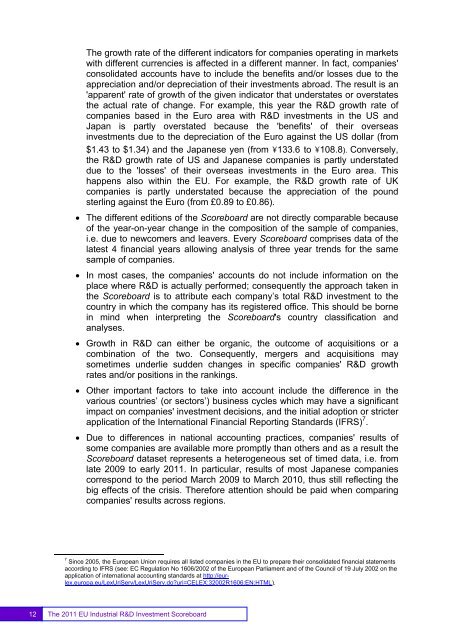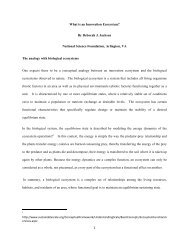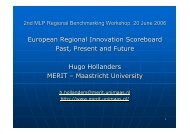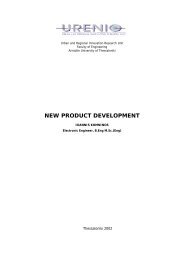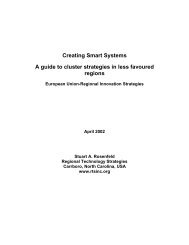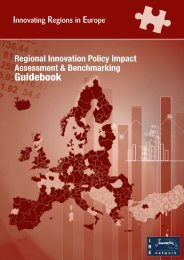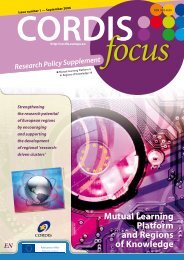EU Industrial R&D Investment Scoreboards 2011
EU Industrial R&D Investment Scoreboards 2011
EU Industrial R&D Investment Scoreboards 2011
You also want an ePaper? Increase the reach of your titles
YUMPU automatically turns print PDFs into web optimized ePapers that Google loves.
The growth rate of the different indicators for companies operating in marketswith different currencies is affected in a different manner. In fact, companies'consolidated accounts have to include the benefits and/or losses due to theappreciation and/or depreciation of their investments abroad. The result is an'apparent' rate of growth of the given indicator that understates or overstatesthe actual rate of change. For example, this year the R&D growth rate ofcompanies based in the Euro area with R&D investments in the US andJapan is partly overstated because the 'benefits' of their overseasinvestments due to the depreciation of the Euro against the US dollar (from$1.43 to $1.34) and the Japanese yen (from ¥133.6 to ¥108.8). Conversely,the R&D growth rate of US and Japanese companies is partly understateddue to the 'losses' of their overseas investments in the Euro area. Thishappens also within the <strong>EU</strong>. For example, the R&D growth rate of UKcompanies is partly understated because the appreciation of the poundsterling against the Euro (from £0.89 to £0.86).• The different editions of the Scoreboard are not directly comparable becauseof the year-on-year change in the composition of the sample of companies,i.e. due to newcomers and leavers. Every Scoreboard comprises data of thelatest 4 financial years allowing analysis of three year trends for the samesample of companies.• In most cases, the companies' accounts do not include information on theplace where R&D is actually performed; consequently the approach taken inthe Scoreboard is to attribute each company’s total R&D investment to thecountry in which the company has its registered office. This should be bornein mind when interpreting the Scoreboard's country classification andanalyses.• Growth in R&D can either be organic, the outcome of acquisitions or acombination of the two. Consequently, mergers and acquisitions maysometimes underlie sudden changes in specific companies' R&D growthrates and/or positions in the rankings.• Other important factors to take into account include the difference in thevarious countries’ (or sectors’) business cycles which may have a significantimpact on companies' investment decisions, and the initial adoption or stricterapplication of the International Financial Reporting Standards (IFRS) 7 .• Due to differences in national accounting practices, companies' results ofsome companies are available more promptly than others and as a result theScoreboard dataset represents a heterogeneous set of timed data, i.e. fromlate 2009 to early <strong>2011</strong>. In particular, results of most Japanese companiescorrespond to the period March 2009 to March 2010, thus still reflecting thebig effects of the crisis. Therefore attention should be paid when comparingcompanies' results across regions.7Since 2005, the European Union requires all listed companies in the <strong>EU</strong> to prepare their consolidated financial statementsaccording to IFRS (see: EC Regulation No 1606/2002 of the European Parliament and of the Council of 19 July 2002 on theapplication of international accounting standards at http://eurlex.europa.eu/LexUriServ/LexUriServ.do?uri=CELEX:32002R1606:EN:HTML).12The <strong>2011</strong> <strong>EU</strong> <strong>Industrial</strong> R&D <strong>Investment</strong> Scoreboard


